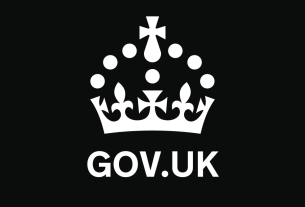|
Getting your Trinity Audio player ready...
|
The spread of deepfake videos, digitally altered photos and images produced by artifical intelligence threaten our ability to discern truth from fiction. Experts have warned of a coming “infocalypse”, and of the consequences for this year’s bumper crop of elections.
Yet the biggest story about photographic manipulation so far in 2024 is that the Princess of Wales manually edited a family portrait. The image was released by Kensington Palace on Mother’s Day to reassure the public about her health.
After noticing signs that the picture was edited, press agencies issued “kill notices” instructing all papers to withdraw the image. This led to more speculation, and an apology from Catherine on X (formerly Twitter) conceding that she does “occasionally experiment with editing”.
The response to this controversy can help us think about the wider challenge of manipulated images and video. In my view, we shouldn’t think of edited photos as a harbinger of disaster spurred by new technology. Rather, they are merely the most recent stage in a long social problem of fakery that we have been navigating for decades.
A royal history of faked photographs
Catherine is not the first British royal to experiment with photography. Queen Victoria and Prince Albert were early enthusiasts, first sitting for photographs in the 1840s. During this time, composite images – which combine multiple exposures into one image – were widespread, owing to the limitations of photographic technology.
Early photographers in the pictorialist movement, explored the artistic possibilities of photographic manipulation, valuing photography as an art form more than as a medium of documentary.
Some of these composite photographs, such as Henry Peach Robinson’s image Fading Away, were controversial, because of both their subject matter and technique. They were seen as undermining the reliability of the medium. Victoria and Albert took the side of pictorialist photographers, purchasing copies of composite images by Robinson, Oscar Gustave Rejlander and others.
Portrait photographers employed similar techniques. There are several composite portraits of the royal family from around this time. Given the prevalence of these techniques, it’s likely that many group shots of the royals in the 19th century are composites.
Henry Peach Robinson
Journalism at this time was not exempt from image manipulation. Before it became possible to directly print photographs in newspapers in 1880, there was a widespread practice of copying photographs into drawings, embellishing them by adding colour and improving the composition.
This wouldn’t have been seen as at all unusual in an era in which many photography studios employed painters to touch up portraits. When half-tone printing was introduced, journalists continued to tweak their photographs, with one editor of a photography magazine in 1898 boldly stating that “everybody fakes”.
This practice was eventually stopped not by technological innovation, but by the development of social norms. “Faking” shifted from being an accepted technique to a term of criticism, and photojournalists staked their reputation on not faking their images.
Solving a social problem
Deepfakes and manipulated photos are often discussed as a purely technological problem. The popular suggestion is that more tech – a piece of software or watermark – is needed to identify problematic images. As the fallout from the latest royal family portrait reminds us, producing and disseminating accurate and properly contextualised images is fundamentally about ensuring well-placed trust in competent sources.
Outside of journalistic contexts, we don’t have strong social norms against adding colour to photographs. New phones are sold touting their ability to automatically edit together photographs. Catherine appears to have carried out the kind of editing on this picture which would be commonplace on photographs shared on Instagram or the family group chat.
The problem here isn’t that photo editing software fundamentally undermines our trust in photographs. The problem is that the British royal family – in particular its press operation – has failed to live up to the standards we would expect from a public organisation. But the fact that we have those standards, and press organisations were able to respond accordingly, shows we have the tools to manage this problem.
We should not be panicking about manipulated images undermining the institutions that sift truth from falsehood. Nor should we be complacent because this faked image was quickly discovered.
Journalists have always had to contend with manipulated media. But this is a social, not just a technological, problem. Rather than looking to tech or AI solutions to manipulated images, the historical record suggests that what’s needed is to put more funding into human journalists, including experts in photographic manipulation.



